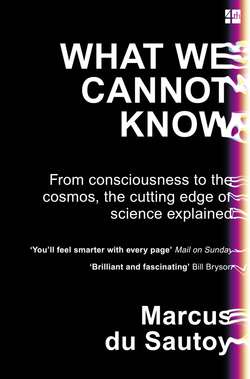Читать книгу What We Cannot Know: Explorations at the Edge of Knowledge - Marcus Sautoy du - Страница 21
THE RULES OF THE GAME
ОглавлениеNewton explains in the Principia three simple laws from which so much of the dynamics of the universe evolve.
Newton’s First Law of Motion: A body will continue in a state of rest or uniform motion in a straight line unless it is compelled to change that state by forces acting on it.
This was not so obvious to the likes of Aristotle. If you roll a ball along a flat surface it comes to rest. It looks like you need a force to keep it moving. There is, however, a hidden force that is changing the speed: friction. If I throw my dice in outer space away from any gravitational fields then the dice will indeed just carry on flying in a straight line at constant speed.
In order to change an object’s speed or direction you needed a force. Newton’s second law explained how that force would change the motion, and it entailed the new tool he’d developed to articulate change. The calculus has already allowed me to articulate what speed my dice is going at as it accelerates down towards the table. The rate of change of that speed is got by applying calculus again. The second law of Newton says that there is a direct relationship between the force being applied and the rate of change of the speed.
Newton’s Second Law of Motion: The rate of change of motion, or acceleration, is proportional to the force that is acting on it and inversely proportional to its mass.
To understand the motion of bodies like my cascading dice I need to understand the possible forces acting on them. Newton’s universal law of gravitation identified one of the principal forces that had an effect on, say, his apple falling or the planets moving through the solar system. The law states that the force acting on a body of mass m1 by another body of mass m2 which is a distance of r away is equal to
where G is an empirical physical constant that controls how strong gravity is in our universe.
With these laws I can now describe the trajectory of a ball flying through the air, or a planet through the solar system, or my dice falling from my hand. But the next problem occurs when the dice hits the table. What happens then? Newton has a third law which provides a clue:
Newton’s Third Law of Motion: When one body exerts a force on a second body, the second body simultaneously exerts a force equal in magnitude and opposite in direction to that of the first body.
Newton himself used these laws to deduce an extraordinary string of results about the solar system. As he wrote: ‘I now demonstrate the system of the World.’ To apply his ideas to the trajectory of the planets he began by reducing each planet to a point located at the centre of mass and assumed that all the planet’s mass was concentrated at this point. Then by applying his laws of motion and his new mathematics he successfully deduced Kepler’s laws of planetary motion.
He was also able to calculate the relative masses for the large planets, the Earth and the Sun. He explained a number of the curious irregularities in the motion of the Moon due to the pull of the Sun. He also deduced that the Earth isn’t a perfect sphere but should be squashed between the poles due to the Earth’s rotation causing a centrifugal force. The French thought the opposite would happen: that the Earth should be pointy in the direction of the poles. An expedition set out in 1733 which proved Newton – and the power of mathematics – correct.
